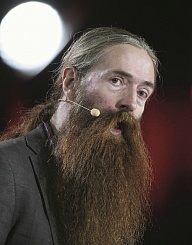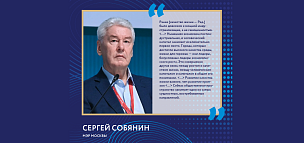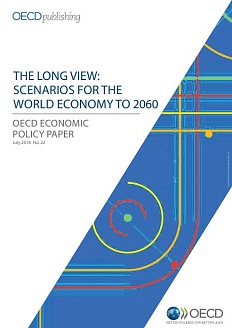Text: Ariel Fainerman, Immanuel Kant Baltic Federal University, Institute of Physics, Mathematics and Information Technologies, and Natalia Nifantova, especially for SPIEF
For centuries people have dreamed of inventing an ‘anti-ageing pill’ that could shut down the ageing process forever. The current scientific consensus leans towards the conclusion that it is simply not possible to turn off ageing. Oddly enough, this is supported by studies of long-lived species of animals and those that hardly age at all. Naked mole rats are resistant to cancer and are able to live for 30 years, which is an unthinkable lifespan for rodents. The longest-lived vertebrates are Greenland sharks, whose life expectancy in nature can reach 300–500 years. Freshwater polyps are effectively immortal, though they are far from humans in evolutionary terms.
Scientists are discovering increasing numbers of new biochemical and genetic features that allow these creatures to live long lives and avoid ageing. We’ve managed to gain an insight into some of their lifehacks. For example, scientists have observed that bacteria utilize a CRISPR/Cas genome editing system, and they are now preparing to use this to treat genetic diseases in humans. But all these little secrets do not add up to a universal recipe for longevity. Each animal has its own mechanisms, which are directly dependent on the features of its metabolism, the structure of its body, and even the arrangement of its brain.
Genetic research of people with exceptional longevity is also constantly being conducted. But the fact remains: no person on Earth, regardless of how good their genes are or whether they have lived a healthy lifestyle and received excellent medical care, has lived to be 200 years, much less 300 years old. The record for human longevity is still held by the Frenchwoman Jeanne Calment, who died in 1997 at the age of 122. There are also no extremely long-lived members of other branches of our primate family. All this indicates that neither eternal life nor eternal youth is provided for in the ‘construction’ of man. But there is good news.
An engineering approach to ageing
In order to radically extend the healthy life of a person, it is not necessary to redesign it at the genome level, at least in the view of part of the scientific community. Instead of trying to come up with an invincible machine, you need only make timely repairs when there are breakdowns and replace parts.
To appreciate this point, simply compare an old car with a new one and understand that it has deteriorated from the effect of time. Scientists, even without fully understanding the causes of ageing, can describe its main features. The British gerontologist Aubrey de Grey was the first, in 2004, to describe the main kinds of damage that occur in the ageing human body, and, more importantly, to identify potential techniques that could be used to repair them. His concept is called SENS (Strategies for Engineered Negligible Senescence).
De Grey has been promoting his ideas for radical rejuvenation for nearly 17 years. Although he was at first considered an eccentric, it cannot be denied that over the years he has had a significant influence on attitudes towards ageing. In the scientific community and beyond, ageing is increasingly no longer being considered to be a sad inevitability. Rather, scientists are becoming more receptive to the idea that it is a disease that can and should be treated.
Today, the SENS Research Foundation, founded by Aubrey de Grey, sponsors applied research in the field of rejuvenation wherever possible. The laboratories of many famous universities, including the University of Oxford in Britain, Yale and Harvard in America, and the French Pierre and Marie Curie University, collaborate with SENS. Five biotechnology companies are also affiliated with de Grey’s foundation. These companies work directly on transforming scientific knowledge into engineering techniques to fight ageing.
Human body repair workshop
The SENS concept includes seven types of damage that occur during the ageing process, and seven programmes to develop therapies designed to treat such damage. According to de Grey, four of them have come very close to practical implementation.
LysoSENS: the removal of intracellular waste products. Ageing skin pigmentation, cholesterol plaques in blood vessels, and age-related retinal degeneration (one of the causes of age-related blindness) are just a few consequences of the fact that, over time, cells lose their ability to digest accumulated metabolic products. In cells, this process is controlled by organelles (lysosomes), and they accumulate ‘digestive disorders’ for the same reasons as humans do: they lack a sufficient number of enzymes to break up complex molecules. The LysoSENS strategy is to supply the lysosomes with enzymes so that they can perform their designated function once again.
Ichor Therapeutics has developed a therapy that removes from cells vitamin A-derived A2E, which accumulates in the eye’s epithelium and causes blindness. When Ichor Therapeutics fully develops the technology, it will be possible to use it to remove intracellular waste throughout the body.
AmyloSENS: the removal of extracellular waste products. One example of the malignancy of extracellular waste is amyloid beta, which forms plaques in the brains of patients with Alzheimer’s disease. All of the proteins in the body are long molecules. When considering these proteins, it is important to note not only the atoms that they are made up of, but also the shapes into which they are folded. Incorrectly folded proteins clutter the intercellular space, preventing cells from functioning properly and leading them to die.
A potential solution is to incite the immune system to go after them. Introduce antibodies into the body that will bind to harmful proteins, and immune system cells will begin to react to them like enemies: they will cut them up and dispose of them. Better still, catabodies represent a particularly independent subspecies of antibody. They not only mark bad proteins, but also break them down into smaller fragments. Covalent Biosciences is actively developing such catabodies.
ApoptoSENS: victory over the army of ‘zombie cells’. ‘Zombies’ are cells that are affected by senescence and have accumulated a certain amount of damage. For some reason, these cells refuse to voluntarily die as a result of apoptosis, or programmed cell death. A small number of zombie cells are useful, since they play a role in healing wounds. But with age, the immune system’s ability to kill excess zombies wanes. Cells affected by senescence secrete many chemical inflammation mediators, causing such diseases of old age as arthritis. New cells cannot establish themselves in such an aggressive environment, and this prevents tissue renewal. By contrast, cancerous cells can thrive in an inflammatory environment.
The pharmaceutical company UNITY Biotechnology is developing senolytic drugs, which target the cells affected by senescence, but leave others untouched. Clinical trials will begin in 2018. It is likely that of all the rejuvenating therapies under development, senolytics will be the first to reach the market.
RepleniSENS: cell replacement. Dead cells are replaced by new ones from a certain number of special stem cells. Some tissues do this quickly, such as the intestinal epithelium or blood, while for others the process is a little slower. And the brain, heart, and muscles replace cells so slowly that for a long time it was thought that they did not renew them at all. Over the course of 80 years the human brain loses a third of its cells. But the rapidly regenerating organs also start to encounter problems as they age. In stem cells DNA mutations, damage, and waste products accumulate in the same way as in normal cells. They become slower to divide, and they start to degrade.
The solution is to replace cells. Ten years ago, the only source of human pluripotent stem cells (meaning ones that are able to turn into any of 230 types of human cell) were early-stage embryos left over from in vitro fertilisation (IVF) procedures. Fortunately, scientists have found a way to reprogram the cells of adults to become induced pluripotent stem cells (iPSCs). Thus, any person can donate their own stem cells to help themselves, since these stem cells can be easily multiplied in the laboratory.
In January 2018, the US Food and Drug Administration (FDA) approved the use of an automated bioreactor-based stem cell production platform developed by experts at the Mayo Clinic. The device is capable of producing billions of stem cells within a matter of days. This means that experiments and clinical trials that seek to probe the regenerative capabilities of stem cells, from growing skin to restoring the brain, will now be able to proceed at a much faster rate.
The potentially immortal may already be among us
Aubrey de Grey notes: «Most of the proposed technologies associated with stem cells are already at the clinical trial stage. The same is true of efforts to remove amyloids in patients with Alzheimer’s disease. The next breakthrough will likely be a technology that can destroy cells affected by senescence — Unity promises to put such a technology into clinical trials this year — along with one to remove intracellular waste to treat macular degeneration (the macula is the area of greatest visual acuity in the retina; the project targeting macular degeneration was developed by Ichor Therapeutics — Ed.). The other three problems are more complicated, but we are making gradual progress there, too!»
De Grey is referring to the GlycoSENS, MitoSENS, and OncoSENS programmes. GlycoSENS proposes solving the problem of protein crosslinks, which form with age in almost all of the body’s tissues as a result of interaction with blood glucose. They produce such symptoms as wrinkles and the hardening of blood vessels, which is responsible for high blood pressure in the elderly and clouding the eye lens. MitoSENS is a programme to protect mitochondria (the cell’s energy stations) from the effects of free radicals. OncoSENS is a gene therapy for cancer. It is not aimed at modifying the immune system’s cells (like certain recently marketed therapies), but at changing the genome of the cancer cells themselves.
The problem faced by the latter two programmes is that existing methods of editing DNA are imperfect. But, as de Grey points out, the SENS Research Foundation is already conducting research to solve this problem.
«We combined two technologies: CRISPR, which precisely binds to the chosen location in the genome, but which can insert only a small fragment of the new DNA, and Bxb1, which can insert large DNA fragments, but which cannot grab onto the mammalian genome. The idea is to use CRISPR to create a ‘landing pad’ for Bxb1 in the right location within the human genome and then to use Bxb1 to insert the selected genes into this location.»
Of course, the effectiveness of any of these developments in humans has yet to be confirmed. But if the trials are successful, we will be able to win the war with old age within 20 to 30 years. By the measure of one human life, that is a long time. However, the important takeaway is that this period will be a time of even more intense research. By the time the first people who have tried anti-ageing therapies catch up with their biological age, new rejuvenation techniques will have reached the market. If the technology eventually develops faster than the speed at which people who are currently alive age, then they have every chance of living for an indefinitely long period of time. And we’re not just talking about today’s newborns. There’s also a chance for those who have already hit 50. In the race against ageing, the main thing is to be at least one step ahead.
Who will be able to afford youth? The prospects are exciting. But the question remains: who will be able to afford radical rejuvenation therapy? The first therapies to reach the market will certainly not be cheap. All of them require either high-precision methods of ‘targeting’ certain types of cells with the medication, or the ability to work individually with the patient’s cells in the laboratory. It can be assumed that in terms of price, these therapies will cost at least the same as a recently introduced gene therapy for cancer: starting at 350,000 dollars per course of treatment. Aubrey de Grey, however, has an interesting take on the problem of the affordability of these technologies: «Unlike modern medicine for the elderly, which is also expensive but in fact cannot solve the problem of ageing, the medicine we are talking about will work. It will allow people to retain their youth and health throughout life, which will also become much longer.
And this means that this medicine will pay for itself. It will allow the people who use it to continue to contribute to the welfare of society instead of ageing and retiring. And the young will be more productive. They will not need to look after their sick old parents. Even if one looks very pessimistically at the cost of rejuvenation, it is obvious that any country that refuses to provide such therapy to its elderly citizens on affordable terms will face economic collapse.Vladimir Skulachev, a Russian scientist and professor at the Moscow State University, is also working on the development of a therapy that can stop free radicals from damaging mitochondria. His invention is SkQ, a molecule that can penetrate through the lipid membrane of mitochondria and specifically deliver the plant antioxidant plastoquinone, which neutralizes free radicals, to the desired location. Skulachev created Visomitin eye drops, which are designed to treat dry eye syndrome, on the basis of this ion. The effect of SkQ when ingested is still being investigated. In experiments it has been shown that when SkQ is added to drinking water, it prolongs the life of mice.
Now this might sound strange. Rejuvenating biotechnology paid for through taxes? But a good point of comparison is free school education. It requires state spending. But if you don’t educate your children, then in 20 years you will have a population that cannot find work.»
De Grey himself is concerned not so much with the future as with the present. Currently all applied developments in the anti-ageing field are sponsored by private donations. For example, in February this year, Vitalik Buterin, the creator of the Etherium platform and cryptocurrency, donated digital coins worth a total of 2.4 million dollars to the SENS Foundation. This is a huge sum for the organization, whose annual budget is just 5 million dollars. However, these injections of private capital are still not enough. For the sake of comparison, the WHO budget for 2018–2019 is 4.4215 billion dollars. The budget of the US National Institutes of Health for 2019 is 34.7 billion dollars. And their programmes include no projects that are designed to treat ageing. This is because officially, at the organizational and institutional level, ageing is not considered a disease.
But there is good news here, too. In the International Classification of Diseases, 11th edition (ICD-11), which is due to come into force in 2018 and is now available in a draft version on the WHO website, the descriptor ‘age-related’, that is, ‘associated with ageing’, is used to define many diseases. And this is not just a symbolic step towards recognizing ageing as a reversible state. This opens up opportunities for funding clinical trials of anti-ageing drugs within the scope of government programmes. It’s too early to rejoice just yet but, perhaps, the state will truly take an interest in this vitally important area of research, which until now has been promoted only through the efforts of enthusiasts who were called eccentrics.
THE CONQUEROR OF OLD AGE
• Aubrey David Nicholas Jasper de Grey was born on 20 April 1963 in London.
• He is a British biologist and gerontologist, a fellow at the Institute for Ethics and Emerging Technologies, an advisor to the Singularity University, editor-in-chief of the journal Rejuvenation Research, and a visiting professor at the Moscow Institute of Physics and Technology since 2013.
• In 2007, de Grey wrote the sensational popular science book Ending Aging, which considers the question of achieving a complete victory over ageing in thorough detail. According to the conclusions of the gerontologist, ageing can be defeated through the resources of medicine within the next few decades.
• The concept of SENS, or ‘Strategies for Engineered Negligible Senescence’, developed by de Grey, is designed to achieve this. The SENS Research Foundation, of which Aubrey de Grey is Co-Founder and Chief Science Officer, is developing this concept jointly with many scientific and pharmaceutical organizations.
WHAT CAN THE PHARMACEUTICALS INDUSTRY CONTRIBUTE?
Another direction in the fight against ageing is the study of geroprotectors, which are drugs that are known to affect the lifespans of animals, including mice, rats, and worms. Two of them have become particularly well-known.
The first of these is Metformin, a drug that is used to treat diabetes. In experiments, worms that received Metformin lived 18–36% longer (depending on the dose) and mice lived five percent longer than those in the control group that did not receive the drug. This effect is attributed to the ability of the drug to lower blood glucose levels. However, Metformin causes such side effects as nausea, vomiting, and diarrhoea.
Rapamycin is used to prevent organ rejection during transplantation. At high doses, Rapamycin increases the life expectancy of mice by 23–26%. It has been shown that Rapamycin binds to a specific gene, which has been called mTOR (mammalian target of Rapamycin). Scientists are actively studying the functions of this gene to understand how it relates to ageing.
These studies will help us to better understand the mechanism of ageing. But it would be premature to run to the pharmacy just yet: you won’t be able to live for a couple of centuries on Metformin. These drugs do not produce any such effect, not even in mice. Probably, all they will be able to do is add a few years to your life, and even then only if they are constantly administered. In other words, quitting smoking and signing up to your local swimming pool are more effective measures for prolonging your life. What’s more, these options won’t cause diarrhoea.
Source: SPIEF-2018 Official Magazine






